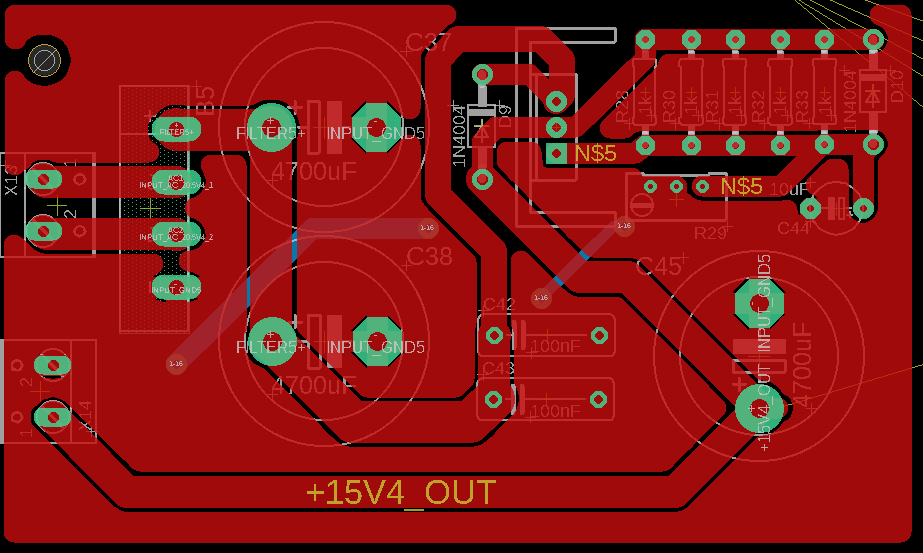I have a circuit which purpose should regulate to voltage down to at least 3V. But when I try to adjust the 5kΩ potentiometer I only get minimum 14V voltage drop. I have a transformer which goes to bridge rectifier and my circuit input voltage is 19V DC after the rectifier. So I am very curious that why I can not arrange the voltage drop to less than 14V. You can find the specific information about my circuit and also schematic and pcb drawings down below.
Transformer: 220V AC/ 15V AC 2A LM338T Input Voltage: 19V DC
My doubts:
- In LM338T datasheet it has a circuit diagram which LM338T input voltage is minimum 28V DC. So is that why I can not get the voltage I want?
- LM338T is 5A regulator. I have max 2A input.
I tried to change the resistor values but nothing changes. Let me know what you think.
[UPDATE] I used 120Ω 1/4 watt resistance but resistance burned. That's why I am using 5 resistance as a paralel. I don't have any 120Ω resistance left so when i get some i will update this topic.


